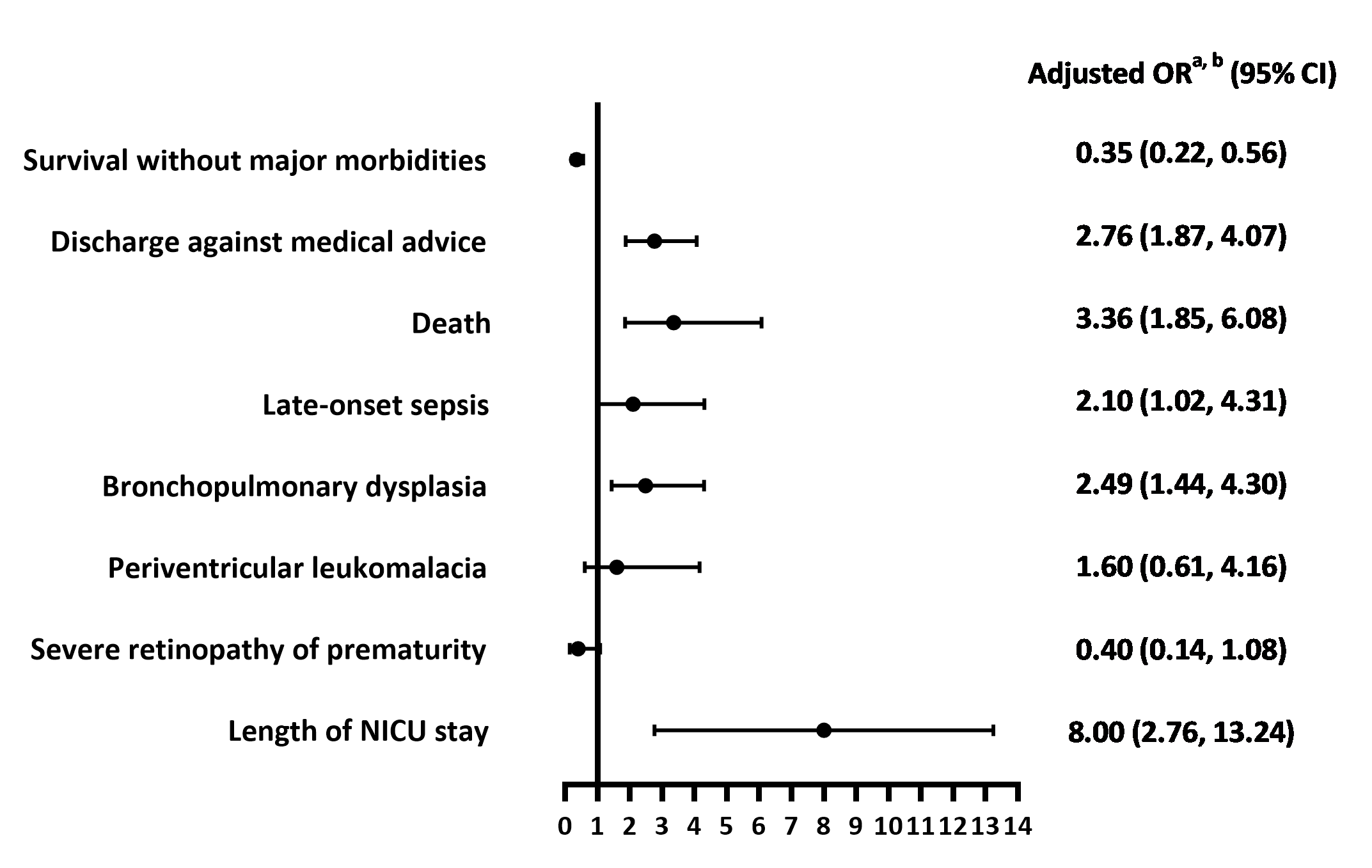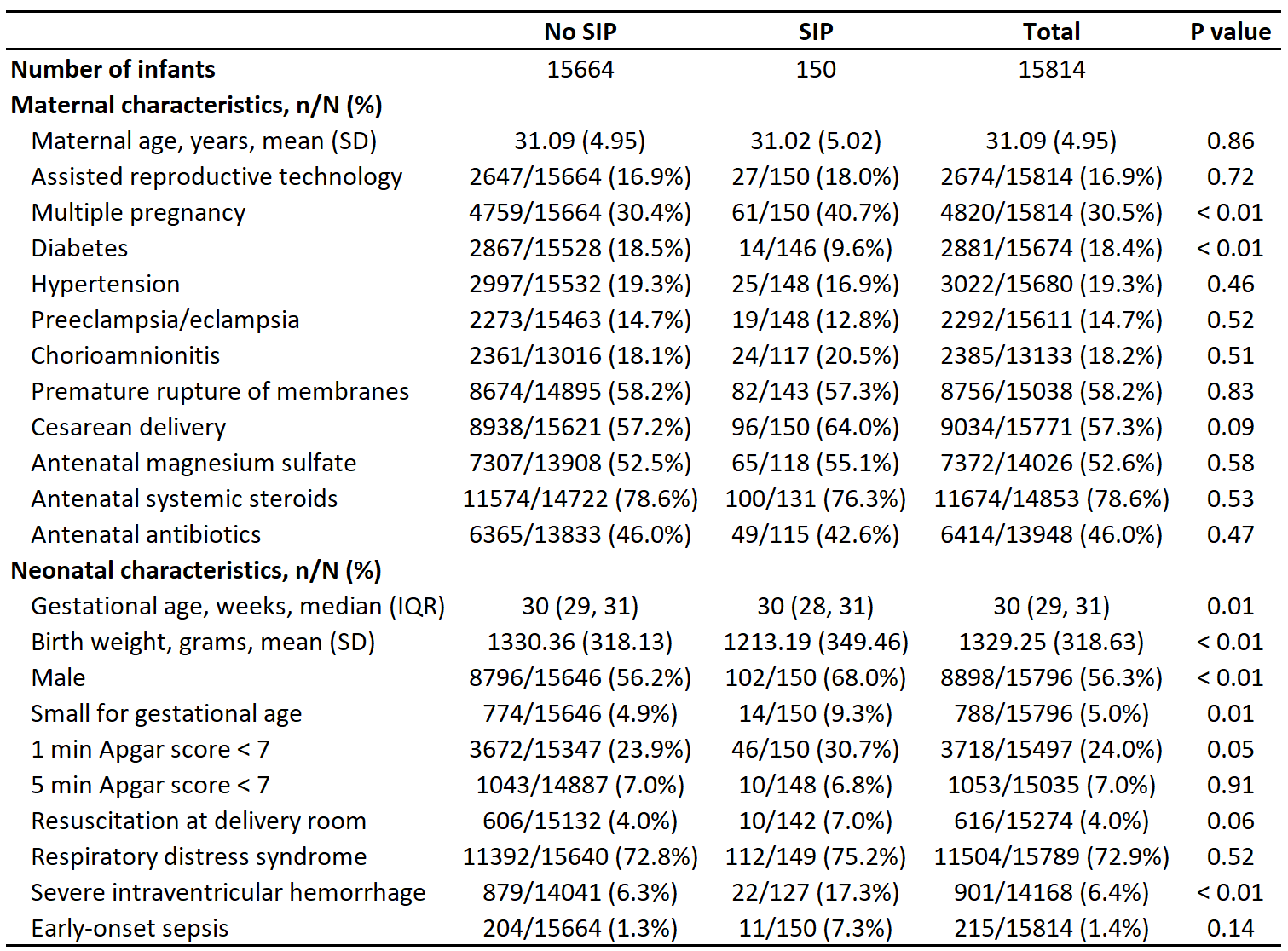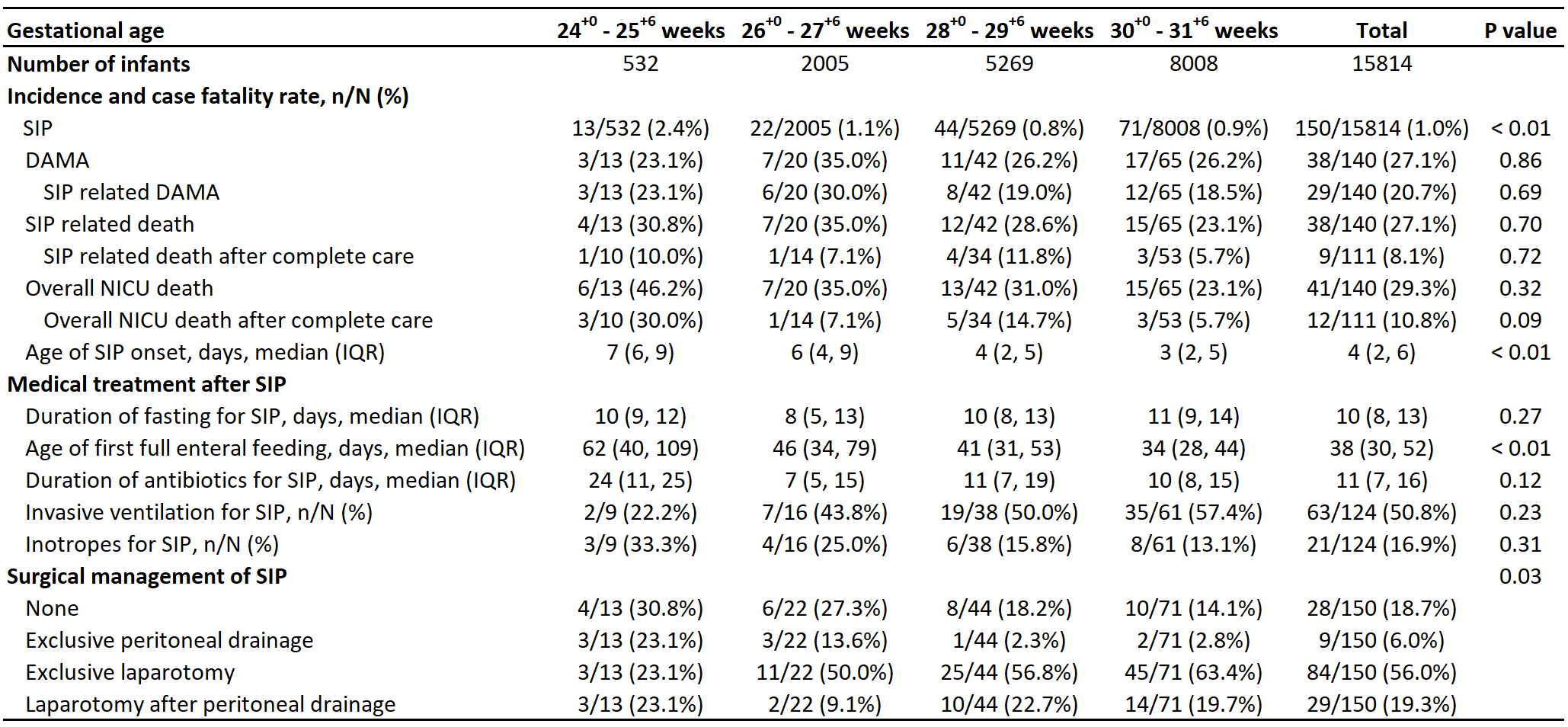Neonatal GI Physiology & NEC
Neonatal GI Physiology & NEC 3: Gut Health Clinical Research
67 - Spontaneous Intestinal Perforation in Very Preterm Infants in China: A Multicenter Cohort Study
Publication Number: 67.235

Weiying Mao, MD
fellow
Children's Hospital of Fudan University
Shanghai, Shanghai, China (People's Republic)
Presenting Author(s)
Background: Spontaneous intestinal perforation (SIP) is a common surgical bowel condition affecting preterm infants. There is limited data on the morbidity and mortality of very preterm infants (VPI, < 32 weeks’ gestation age (GA)) with SIP in China.
Objective: To describe the prevalence, risk factors, treatment, and outcomes of SIP in VPI in China.
Design/Methods: This cohort study included all infants born at 24+0-31+6 weeks GA from January 1st, 2019, to December 31st, 2020, and admitted within 7 days after birth to the neonatal intensive care units (NICU) in the Chinese Neonatal Network (CHNN). The primary outcome was survival without major morbidities (late-onset sepsis, bronchopulmonary dysplasia, periventricular leukomalacia, or severe retinopathy of prematurity). Association between SIP and neonatal outcomes was evaluated using multivariate logistic regression controlling for possible confounders.
Results:
Out of the 15814 enrolled infants, 150 (1.0%) developed SIP with a median onset age of 4 days. Infants born at lower GA had a higher incidence of SIP (P < 0.01). Among all infants with SIP, 84 (56.0%) were treated with laparotomy only, 9 (6.0%) with drainage only, 29 (19.3%) with drainage followed by laparotomy, and 28 (18.7%) were managed conservatively without surgical intervention. Maternal characteristics of infants with and without SIP were similar, except for prevalence of multiple pregnancy (40.7% vs. 30.4%; P < 0.01) and diabetes (9.6% vs. 18.5%; P < 0.01). Infants with SIP were more likely to be male (68.0% vs. 56.2%; P < 0.01), small for gestational age (9.3% vs. 4.9%; P = 0.01) and have severe intraventricular hemorrhage (17.3% vs. 6.3%; P < 0.01) compared to those without SIP. Ten SIP cases were lost to follow-up, and 41 (29.3%) of the remaining 140 infants with SIP survived without major morbidities, significantly lower than those without SIP (9279/15664, 59.2%) (P < 0.01). Multivariate analysis revealed SIP was associated with a higher risk of death (adjusted OR 3.36; 95% CI 1.85 to 6.08), late-onset sepsis (adjusted OR 2.10; 95% CI 1.02 to 4.31), bronchopulmonary dysplasia (adjusted OR 2.97; 95% CI 1.78 to 4.95) and longer NICU stay (adjusted OR 8.00; 95% CI 2.76 to 13.24).
Conclusion(s): SIP was associated with increased mortality and morbidity in VPI across China. Effective strategies are urgently needed for the prevention and management of SIP.


